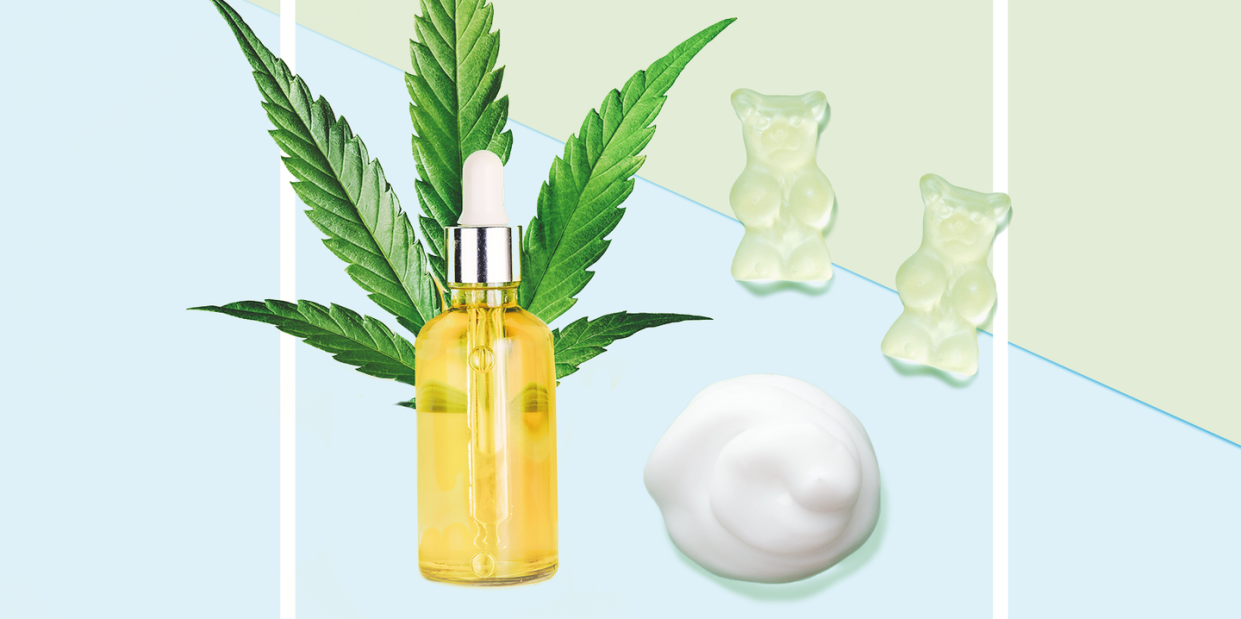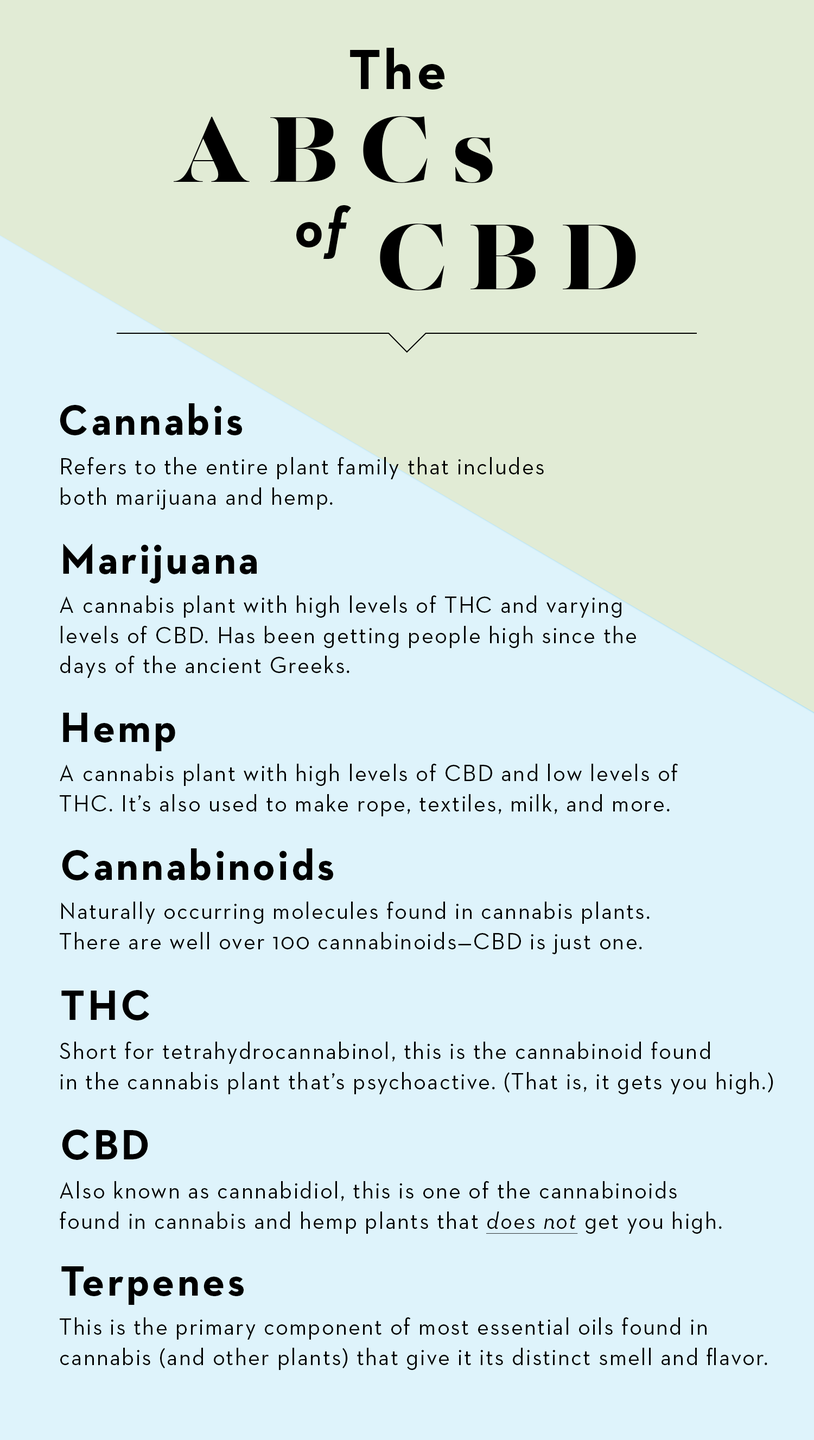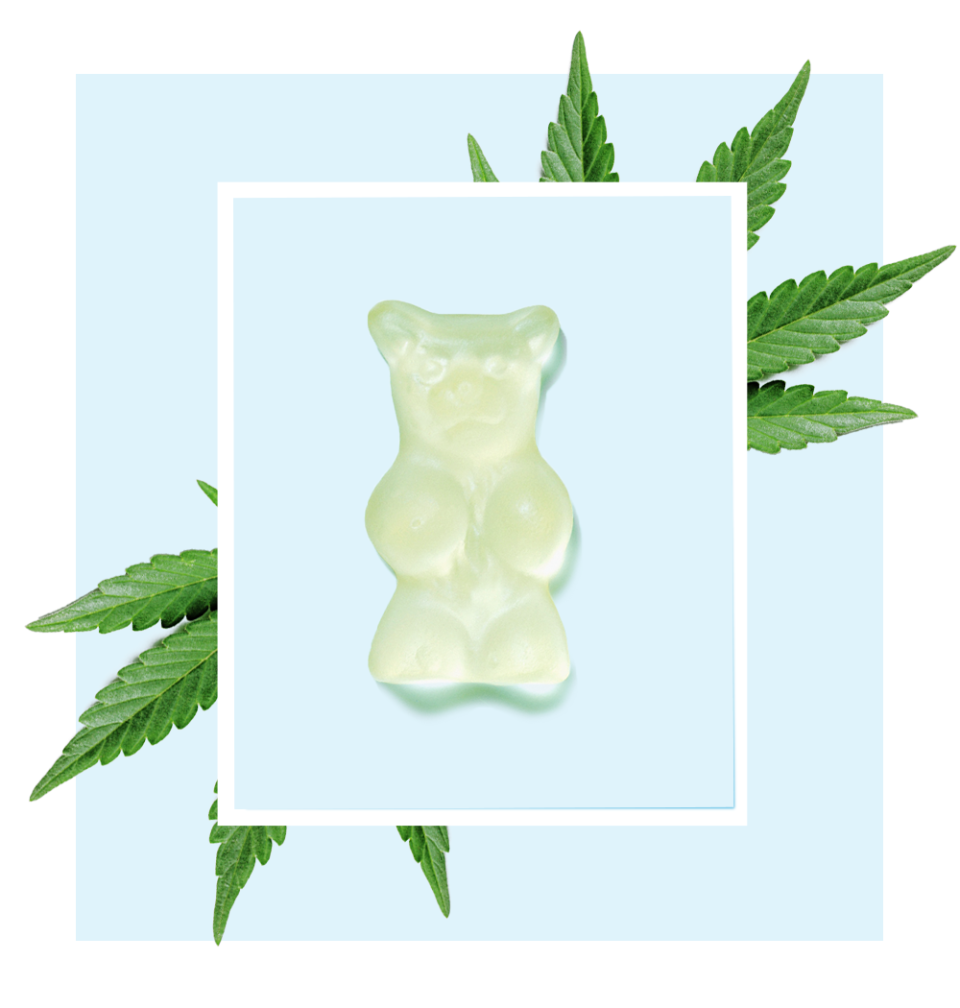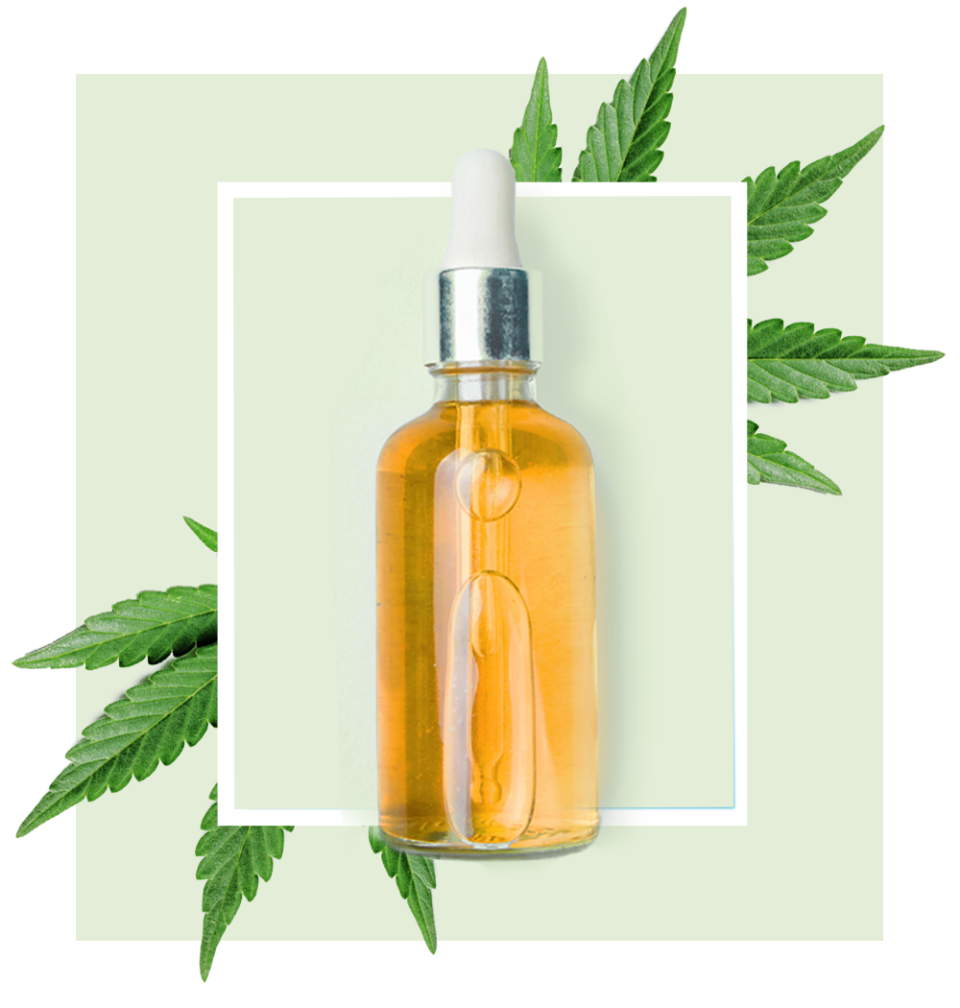A Beginner's Guide to CBD:

CBD is everywhere these days: You can get it in dispensaries and drug stores or at your local bar and corner store. You can drink it, eat it, vape it, and slather it on your skin. One thing you can’t do? Get stoned on it. While CBD comes from same plants that produce pot, it’s more about healing that about getting high.
The enthusiasts who have made CBD a $1 billion business claim it calms anxiety, eases pain, soothes sleep problems, and more. The theory behind how it works seems promising: CBD — which stands for cannabidiol, a compound found in cannabis plants — is similar to compounds the human body produces naturally, called endocannabinoids, which help regulate stress, sleep, metabolism, memory, inflammation, and immunity. Some think CBD is so similar to these naturally occurring molecules that it can work the same kind of stress-relieving, sleep-inducing, and pain-reducing magic.
But here’s the catch: There’s no definitive scientific evidence that shows exactly how CBD works — or even if it works at all — says Mark Wallace, MD, a professor of anesthesiology at the University of California San Diego, who’s been studying medical cannabis for more than 20 years. “There’s a lot of hype around CBD that’s completely unsubstantiated,” he says. “While there are a lot of theories, we don’t have the proof yet, because it’s been hard to study.” After all, until CBD was legalized on the federal level in 2018, if was difficult for researchers to get any samples to test out.
Before you see for yourself if CBD has healing super powers or is just a scam, here’s important info about how it may work, what researchers do and don’t understand, and what that all means for you.
First, here are some terms you should know before trying CBD.

How CBD might work
While scientists are still figuring out exactly how CBD works, the best theory is that it impacts the endocannabinoid system (ECS) — a complex cell-signaling system that’s thought to regulate a number of important functions in your body, such as stress, sleep, digestion, immunity, memory, and the release of hormones.
The ECS in a nutshell: There are cannabinoid receptors all over your body, though they’re primarily located in the central nervous system and brain (where they’re called CB1 receptors) and in the immune system and inflammatory cells (where they’re called CB2 receptors). Your body produces billions of natural chemicals called endocannabinoids every day, which bind to these receptors to help you do things like sleep, eat, remember where you put your purse, and start the healing process when you cut your finger. When these endocannabinoids are done with their various jobs, enzymes pop up to destroy them.
In the brain, these endocannabinoids act like neurotransmitters — they transport messages from one neuron to another. But rather than send messages with directives to do things, they actually slow down the brain’s signaling, says Mohini Ranganathan, MBBS, associate professor of psychiatry at Yale University and a CBD researcher. “When there’s too much neurotransmission going on — which you might experience as a racing mind, high anxiety, or even an increase in pain — endocannabinoids in the brain help pump the brakes,” says Ranganathan, which might explain why so many people swear by CBD’s anti-anxiety and anti-inflammatory effects.
Another theory, adds Wallace, is that while a healthy ECS is able to make its own endocannabinoids to balance out the experience of anxiety or pain signals in the brain, some people don’t produce enough cannabinoids—or if they do, the enzymes destroy them before they have a chance to do their important work. “We think CBD binds to those CB2 receptors to inhibit the release of pain signaling,” says Wallace. Finally, it may be that that CBD allows the body’s naturally-produced cannabinoids to stay in the brain and body longer, prolonging their calming effect.

What can CBD actually do?
Here are the most common medical conditions that prompt people to try CBD, and what the science says so far:
Control Seizures
Right now, the only CBD treatment that has strong enough evidence to become FDA-approved is for treating childhood epilepsy, particularly the cases that typically don’t respond to anti-seizure medications. In a number of studies, pure CBD administered orally via an oil was shown to reduce the number of seizures and in some cases, stop them altogether. In 2018, the FDA gave its stamp of approval to Epidiolex, the first cannabis-derived medicine for seizures.
Calm Anxiety
There are only a handful of small studies showing that CBD can help you chill. One 2019 study of 72 adults with anxiety and poor sleep found that CBD helped alleviate both conditions within a month. Another recent study of 60 men and women found that while clonazepam (a medication used to treat panic disorders) consistently reduced anxiety better than both CBD and placebo, 300 mg of CBD was shown to significantly reduce anxiety compared to the placebo group. (Interestingly, the same wasn’t true when study participants were given 100 mg or 900 mg of CBD, proving more research is needed to figure out the right dosing, says Ranganathan.) However, other studies have found that CBD had no effect on anxiety, leaving experts in agreement that more research is needed understand how CBD might play a role in treating an anxious mind.
Relieve Pain
One study on animals published in the European Journal of Pain found that CBD applied topically could help lower pain and inflammation due to arthritis. Another study done on rodents found CBD injections prevent inflammatory and nerve pain. Yet the evidence is still pretty slim: When Australian researchers analyzed 104 studies, including more than 10,000 patients, they found that just 29% of patients experienced a 30% reduction in pain after using CBD — not much higher than the 26% who found the same relief using a placebo.
Treat Schizophrenia
Preliminary research indicates that CBD may reduce some of the symptoms of schizophrenia without the side effects that come along with most anti-psychotic drugs. “However, the data is mixed,” says Ranganathan, who has authored studies that show CBD might have some benefit when it comes to treating this mental illness, as well as other studies that have found no effect at all.
But wait — is CBD even legal?
Until recently CBD products (with the exception of the FDA-approved epilepsy drug Epidolex) were lumped into the same category as heroin, according to federal drug laws. However, when Donald Trump signed the Farm Bill into law in December 2018, it legalized CBD that is derived from hemp and contains no more than 0.3% THC. CBD that comes from the marijuana plant is still illegal, since marijuana still has Schedule 1 drug status. Even the TSA recently announced it would allow people to fly with hemp products, including CBD produced within the regulations defined by the new law. “However, we’re still waiting for the USDA to create the final rules regarding the legality of hemp products, which means CBD isn’t yet legal in every state,” says Cristina Buccola, an attorney who specializes in the cannabis industry. “While we wait for federal-level guidance, you should check your own state’s laws. That said, any kind of enforcement we’re seeing as it relates to CBD has been targeted toward the manufacturers and distributors — not the customers.”
The side-effects of CBD
It's possible you will notice drowsiness, dry mouth, and lightheadedness when taking CBD. The FDA strongly advises against using CBD if you are pregnant or breastfeeding. The FDA also notes that CBD can cause liver injury and interact negatively with other medications, so it's important you speak with your doctor before trying a CBD product.

The Dos and Don’ts of buying CBD
Ready to see if CBD can work its alleged magic on you? Proceed carefully with these tips:
✘ DON’T trust labels. A 2017 study published in the journal JAMA found that of 84 CBD products researchers bought online, 43% had more CBD than indicated, 26% had less, and some even had unexpected THC.
✘ DON’T hunt for bargains. “Good CBD is expensive,” says Wallace. “CBD manufacturers have to do a lot of extraction to get CBD oil from hemp plants, and while they’re getting more efficient at that process, it’s time-consuming and expensive.” That’s why most quality CBD products can cost upwards of $50 to $100 for a 1-ounce bottle of oil. However, thanks to the new Farm Bill that legalized hemp, CBD production will likely ramp up, which should drive the costs down.
✘ DON’T believe the hype about the ideal dose. There is absolutely no evidence proving you should take a specific amount for specific result (other than childhood epilepsy — the only medical condition for which CBD is FDA-approved). “We are working on dose studies and trying to figure out how, exactly, CBD is metabolized and absorbed,” says Ranganathan. “We simply don’t have definitive information yet.”
✔ DO look for a “Certificate of Analysis” (CoA) when you order. This document provides lab results of the actual CBD used in the product. If the company website doesn’t include a CoA, call and ask about it — but keep in mind that CoAs aren’t mandatory in every state.
✔ DO choose products made with organic American hemp, which makes it easier to find out if the soil it was grown in has been properly tested. (Hemp is a bio-accumulator, which means it absorbs everything in the soil — including herbicides, pesticides, metals, and fungus, says Wallace.) Better yet: Buy from a state such as California or Colorado that has some sort of cannabis control in place, adds Wallace; this offers another layer of protection against buying a contaminated product.
✔ DO talk to your doctor if you’re going to try CBD. While research on drug interactions with CBD is in its infancy, we do know it has the ability to either stimulate or inhibit the enzymes that metabolize other drugs you might be taking, which could impact the effectiveness of those medications. While the doses in consumer CBD products are typically so low that the risk is likely minimal, says Wallace, it’s still a good idea to talk to your doc about any supplement you’re taking — including CBD.

How to take CBD
Not sure where to even start when it comes to trying CBD? That’s understandable, says Wallace. “This is a very complicated therapy, because there are so many different modes of delivery.” Here, the different ways you can take CBD and how each works:
Edible

WHAT IT IS: CBD oils and tinctures mixed into chocolate bars, gummies, soft drinks, coffee, popcorn, and salad dressing.
HOW IT WORKS: When CBD travels through your digestive system, only a small percentage gets absorbed, says Ranganathan. “If you ingest 100 mg of CBD only about 5 mg may end up in your bloodstream,” says Ranganathan. While scientists are working on increasing bioavailability, there’s another issue to keep in mind: Different people absorb different amounts of the same dose of CBD. “Even the same person taking the same dose on two different days means it may be absorbed differently,” she adds.

Sublingual
WHAT IT IS: Oils and tinctures that are designed to be held under your tongue before swallowing.
HOW IT WORKS: The CBD passes through a permeable membrane under your tongue, bypassing your digestive system and going right into your bloodstream — meaning you will absorb more than you would by simply eating it. It’s not clear exactly how much CBD is absorbed, though, and a good amount of what you put in your mouth will still be swallowed, just as if you’d taken an edible.
Topical

WHAT IT IS: A CBD-infused cream you rub on sore areas like a bum back or arthritic hands.
HOW IT WORKS: A few animal studies have found that transdermal CBD products, which penetrate the skin deep enough to enter the bloodstream, can reduce inflammation and pain-related behavior in rats with arthritis. But we don’t yet know if this translates to humans. Some CBD creams include ingredients such as arnica, menthol, and camphor, which are known to provide an immediate cooling sensation on the skin that distracts from pain — meaning it might not be the CBD at all that soothes the pain in these products.
Should you vape CBD?
When you inhale CBD, it bypasses your digestive system and heads straight for your lung tissue. (One study found that about 25% of the dose of vaped CBD was absorbed, compared with about 5 percent of edible CBD.) But hearing about the dozens of deaths and hundreds of illnesses that have been attributed to vaping may have you rethinking that plan.
While most of the vaping-related deaths have been linked to bootleg products containing THC, that doesn’t mean vaping CBD is safe, says Daniele Piomelli, PhD, professor of anatomy and neurobiology at the University of California Irvine School of Medicine and director of the UCI Center for the Study of Cannabis. “The only info we have about CBD is from clinical trials where CBD is given orally,” he says. “And we haven’t studied the materials in the vaping gadgets. What happens after a certain amount of use at a certain temperature? Could those materials leak into what is vaped and inhaled?”
“We know even less about the health risks of vaping CBD than THC or any of the other marijuana products,” adds Suchitra Krishnan-Sarin, PhD, director of Yale University’s Tobacco Centers of Regulatory Science. “We don’t know what concentrations of CBD come in most products and what they do to pulmonary and cardiovascular health.”Until we learn more, both the CDC and the American Medical Association have recommended that people avoid vaping entirely while the cause of vaping-related illnesses and deaths is determined.

You Might Also Like


